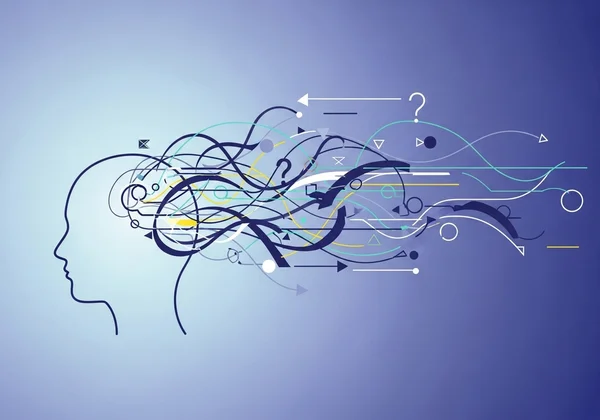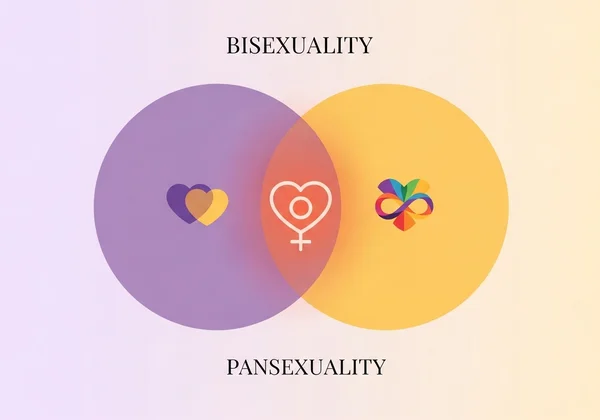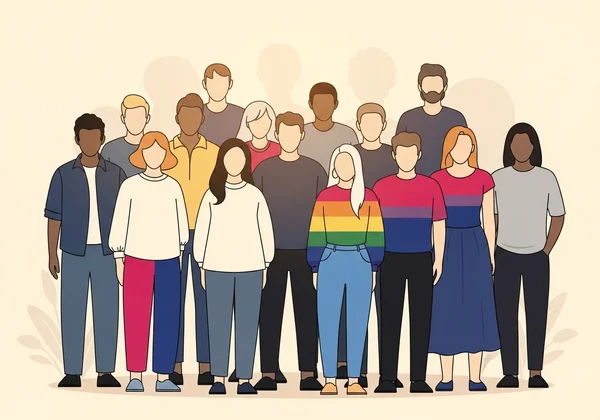Am I Bisexual? A Quiz & Guide to Bi-Curiosity
Feeling drawn to more than one gender can be an exciting, confusing, and deeply personal experience. If you find yourself asking, "Am I bisexual?", know that you're not alone and you've come to a safe place to explore that question. This guide is here to walk with you through the nuances of bi-curiosity, common experiences, and the journey of self-understanding. How do you know if you're bisexual? It starts with honest self-reflection, and we're here to help you begin. For a gentle, supportive first step, you can always explore your feelings with our confidential quiz.

Exploring Multi-Gender Attraction
Sexuality isn't a simple checklist, but a rich spectrum of feelings and experiences. Recognizing potential signs of multi-gender attraction is less about finding definitive proof and more about giving yourself permission to acknowledge your attractions without judgment. This exploration is a key part of understanding your unique identity.
What Does This Attraction Feel Like?
This orientation is broadly defined as attraction to more than one gender. This attraction can manifest in countless ways. For some, it's a near-equal pull towards men and women. For others, it might be a primary attraction to one gender with an occasional, but still significant, attraction to another. It can be physical, emotional, romantic, or a combination of all three.
There is no single "right" way to feel this type of attraction. You might find yourself fantasizing about people of different genders, feeling romantic chemistry with both a male and female friend, or noticing your admiration for people across the gender spectrum. These feelings are all valid parts of this experience. If you're looking to untangle these feelings, an am I bi quiz can be a helpful tool for reflection.
The 'Bi-Cycle': Understanding Fluctuating Attractions
One of the most common, yet often confusing, aspects of this identity is what many call the "bi-cycle." This refers to the experience of your attractions shifting over time. You might go through periods where you feel exclusively attracted to one gender, only for it to shift weeks, months, or even years later.

This fluctuation does not invalidate your identity. It's a natural part of sexual fluidity for many people with this orientation. The bi-cycle can sometimes lead to self-doubt, making you wonder if you were "just confused" before. Remember, having a preference for one gender at any given time doesn't erase your capacity for attraction to others. Your identity is defined by your overall pattern of attraction, not just how you feel today.
Beyond Attraction: Romantic vs. Sexual Feelings
To truly understand yourself, it’s helpful to distinguish between different types of attraction. You can be sexually attracted to someone without wanting a romantic relationship, and vice-versa. This is known as the split attraction model.
For example, a person might be bisexual (sexually attracted to men and women) but homoromantic (romantically attracted to only the same gender). Exploring who you dream of dating, who you are physically drawn to, and whether those groups overlap can provide profound clarity. It's a complex and personal map, and every configuration is valid. Our free sexual orientation test is designed to help you ponder these different facets of your identity in a private setting.
Bisexuality vs. Pansexuality: What's the Difference?
As you explore your identity, you may encounter different labels like pansexual and wonder how they relate to this part of your identity. Understanding these terms can help you find the language that best fits your experience, though remember, no one can choose your label for you.

Defining Each Identity: Nuances and Similarities
Historically, bisexuality has been defined as attraction to two genders (men and women). However, its modern definition, embraced by the community, is attraction to two or more genders, or attraction to genders both like and unlike your own. This definition is inclusive of non-binary individuals.
Pansexuality, on the other hand, is often defined as attraction regardless of gender. A pansexual person might say they are attracted to people, and that a person’s gender identity isn't a factor in their attraction. While there is significant overlap, the key difference is often one of emphasis. The bi label acknowledges that gender can be a factor in attraction, while pansexuality suggests it is not.
Choosing the Label That Feels Right for You
Ultimately, the choice between "bisexual," "pansexual," "queer," or any other label—or no label at all—is entirely yours. Some people who fit the definition of pansexuality still prefer the term bisexual because of its long history and established community. Others feel that pansexual more accurately describes their experience.
There is no test to determine which label is "correct." It's about which word feels most authentic and empowering to you. The goal is self-understanding, not fitting into a perfect box. Tools for self-reflection can help you get personalized insights that honor your individual journey, not force a label.
Overcoming Internalized Biphobia & Imposter Syndrome
One of the toughest hurdles in accepting this identity can be internal. Society often pushes a narrative of "either/or" when it comes to sexuality, which can lead to self-doubt, invalidation, and what is known as imposter syndrome.
“Am I Valid?”: Debunking Common Myths
Internalized biphobia is when you absorb negative stereotypes, leading you to question your own identity. Common myths that fuel this include:
- "It's just a phase." Your identity is real right now, regardless of how it may or may not evolve.
- "You're just greedy/confused." Attraction to more than one gender is a complete and valid orientation, not a sign of indecisiveness.
- "You're not 'bi enough'." Your current relationship status does not erase your identity. Whether you are in a same-gender or different-gender relationship, you are still bisexual.
Challenging these myths is a crucial step. Your feelings are valid. Your identity is valid. If you are attracted to more than one gender, you are bi enough.
Finding Your Community and Support Systems
You don't have to navigate this journey alone. Connecting with other LGBTQ+ people can be incredibly affirming. Hearing others share similar experiences of fluctuating attractions or imposter syndrome can dissolve feelings of isolation.

Look for online communities, local LGBTQ+ centers, or school groups. Following creators who share this identity on social media can also provide daily validation and a sense of belonging. Building this support system is a powerful act of self-care and a reminder that you are part of a vibrant and diverse community. Ready to discover your sexuality in a supportive space?
Your Journey of Self-Discovery: A Path of Self-Discovery and Empowerment
Questioning your sexuality is a profound act of courage and self-awareness. Whether you ultimately identify as bisexual, pansexual, or something else entirely, this journey is about honoring your true feelings. There are no right or wrong answers, only what is true for you.
This exploration is a continuous process of learning and becoming. Be patient and kind to yourself along the way. Your journey is uniquely yours, and every step you take towards understanding yourself is a step toward living a more authentic life. If you're ready to take the next step in a safe and private way, we invite you to start your journey on our homepage.
Frequently Asked Questions About This Orientation
Is it normal to question my sexuality?
Absolutely. Questioning your sexuality is a completely normal and healthy part of human development. Many people explore their identity at various points in their lives, and it's a sign of introspection and honesty. There is no timeline or deadline for figuring things out.
How do you know if you're bisexual?
There is no external sign or definitive test. You know by looking inward at your own patterns of romantic and/or sexual attraction. If you find you have the capacity to be attracted to people of more than one gender, then the label "bisexual" might be a good fit for you. Using a confidential quiz can provide a structured way to reflect on these feelings.
Can my sexual orientation change over time?
Yes, for some people, sexual orientation can be fluid and change over time. This concept is known as sexual fluidity. Someone might identify this way for many years and later find that lesbian or straight feels more accurate, or vice versa. This doesn't invalidate their previous identity; it simply reflects personal growth and change.
What is the difference between bisexuality and pansexuality?
As discussed above, there is a lot of overlap. Generally, bisexuality means attraction to two or more genders, where gender may still be a factor in attraction. Pansexuality typically means attraction where gender is not a determining factor at all. The best label is always the one that feels most comfortable and true to the individual.